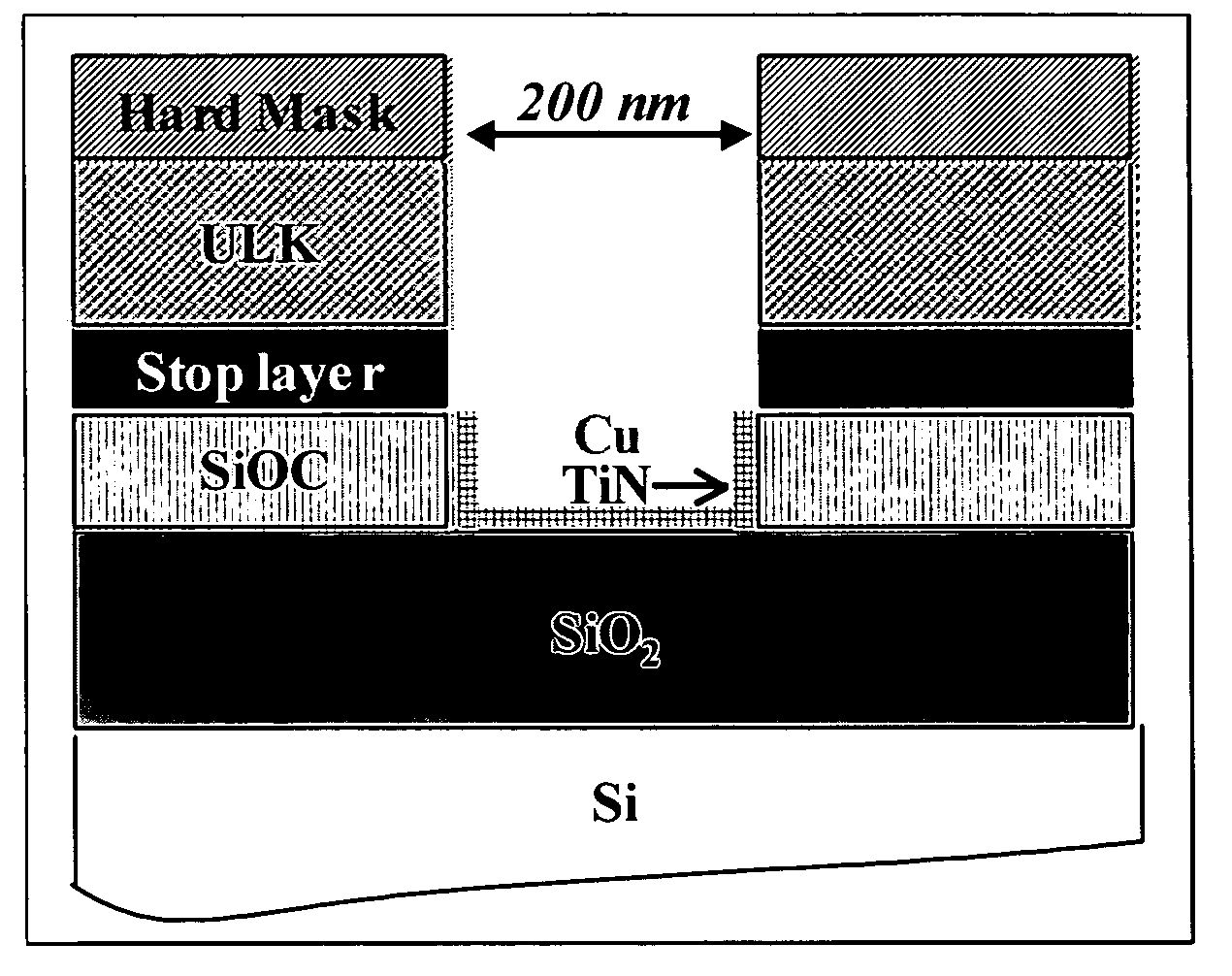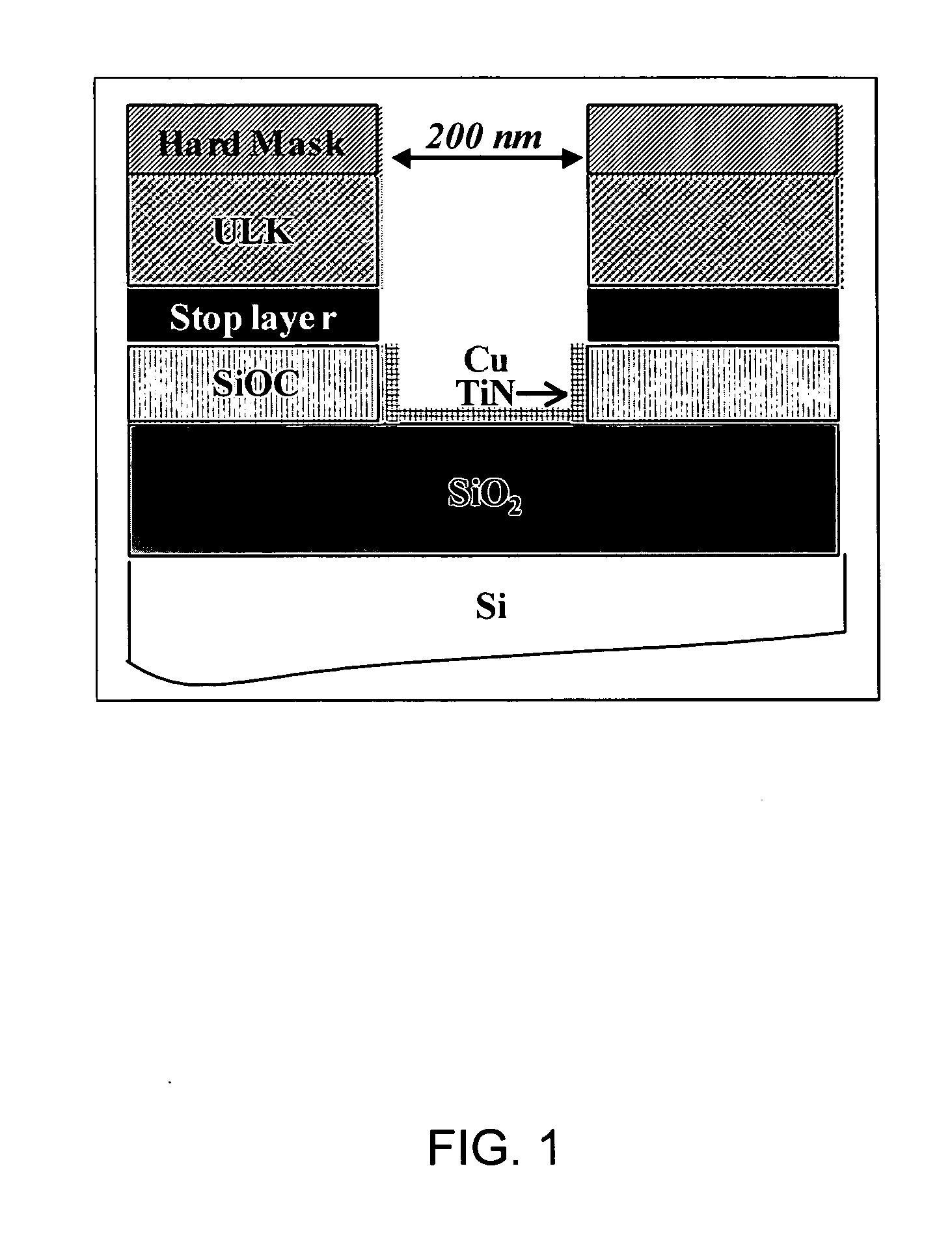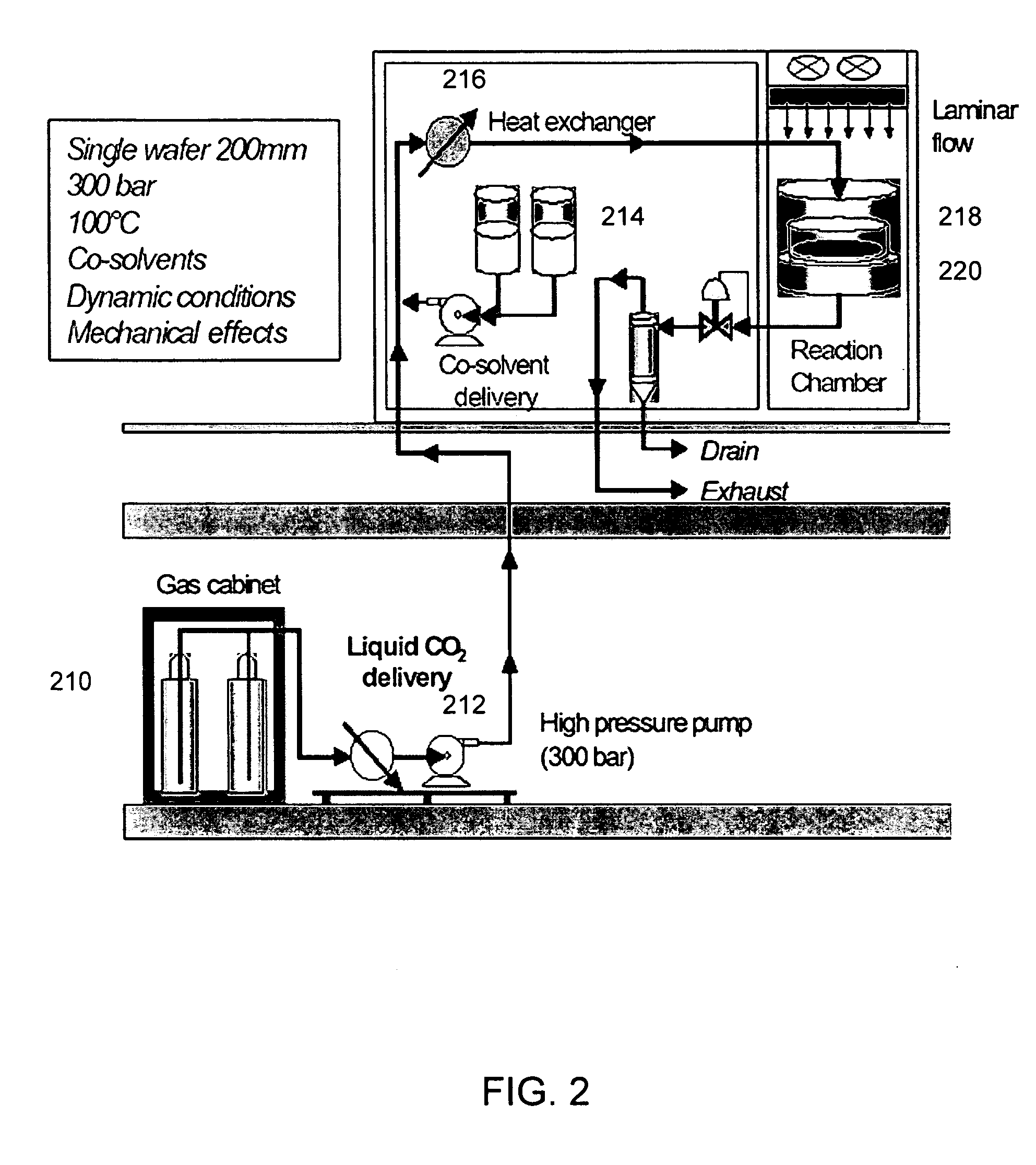Removal of post etch residues and copper contamination from low-k dielectrics using supercritical CO2 with diketone additives
a technology of supercritical co2 and additives, which is applied in the direction of detergent compositions, surface-active detergent compositions, chemistry apparatuses and processes, etc., can solve the problems of exacerbated decontamination and cleaning problems, contaminated dielectric materials, and difficulty in cleaning with aqueous cleaning methods
- Summary
- Abstract
- Description
- Claims
- Application Information
AI Technical Summary
Benefits of technology
Problems solved by technology
Method used
Image
Examples
example 1
Experimental Conditions
[0059] After dielectric etching it was demonstrated that for the 0.25 μm technologies, Cu contamination on backend dielectrics can be very high (1E14 to 1E16 at / cm2). It has been suggested that a residual Cu level under 1E13 at / cm2 at the insulator's surface and sidewall interfaces and lower than 1E11 at / cm2 range on the backside are necessary (see, e.g., F. Tardif, A. Beverina, H. Bernard, I. Constant, F. Robin, J. Torres, Proceedings of the 1999 Electrochemical Society Conference, (1999)).
[0060] With the aim of studying Cu residue cleaning in similar conditions, different copper species including Cu(0), Cu(I) and Cu(II) bulk and surface types were investigated at an equivalent Cu level range for two purposes.
[0061] First, in order to study post etch residues (PER) removal, SC CO2 cleaning processes were tested on damascene structures (cf. FIG. 1). In this case, the cleaning efficiencies were evaluated by SEM observations.
[0062] Second, to analyze accurat...
example 2
Copper Decontamination
[0065] It was found that the efficiency of the cleaning process using SC CO2 with additives depended on several parameters. On the one hand, the chemical reaction kinetic between copper residues and SC CO2 / additives would influence the extraction time and the choice between dynamic or static conditions. Different process times were tested, and the results demonstrate that a 5 min. static treatment can reach a cleaning efficiency greater than 99% (cf. FIG. 4). On the other hand, efficiency of SC CO2 with additive mixtures would be influenced by the individual concentration ratios of additives on the quantity of copper residue removed. It was ascertained that the amount of chelating agent is several hundred times higher than the amount of Cu atoms present on the samples. Thus, given the high diffusivity of supercritical fluids, this concentration is not a limiting parameter. Furthermore, the molecular structure of the chelating agent can have an effect on the ch...
example 3
Influence of the Chelating Agent Structure
[0066] In order to understand chemical mechanisms taking place between the CO2, co-solvent, additives and copper / copper residues at high pressure, and to choose an efficient extraction mixture, copper decontamination measurements of a wide range of organic chelating agents in SC CO2 were carried out on copper contaminated ULK films. Also, the two first parameters previously proposed were chosen for not being limiting factors of the cleaning: 5 min. static process at a chelating agent concentration of about 1,000 ppm in CO2. From literature results, this investigation was undertaken on diketone additives (see, e.g., J. Liu, W. Wang, G. Li, Talanta Oxford, 53, 1149-1154, (2001)). The two ketone groups were placed at different positions from one another on the hydrocarbon backbone in order to identify the optimal molecular structure(s). The analysis demonstrated that two classes of diketone chelating agents (including hfac) can more efficientl...
PUM
| Property | Measurement | Unit |
|---|---|---|
| dielectric constants | aaaaa | aaaaa |
| temperature | aaaaa | aaaaa |
| period of time | aaaaa | aaaaa |
Abstract
Description
Claims
Application Information
 Login to View More
Login to View More - R&D
- Intellectual Property
- Life Sciences
- Materials
- Tech Scout
- Unparalleled Data Quality
- Higher Quality Content
- 60% Fewer Hallucinations
Browse by: Latest US Patents, China's latest patents, Technical Efficacy Thesaurus, Application Domain, Technology Topic, Popular Technical Reports.
© 2025 PatSnap. All rights reserved.Legal|Privacy policy|Modern Slavery Act Transparency Statement|Sitemap|About US| Contact US: help@patsnap.com



